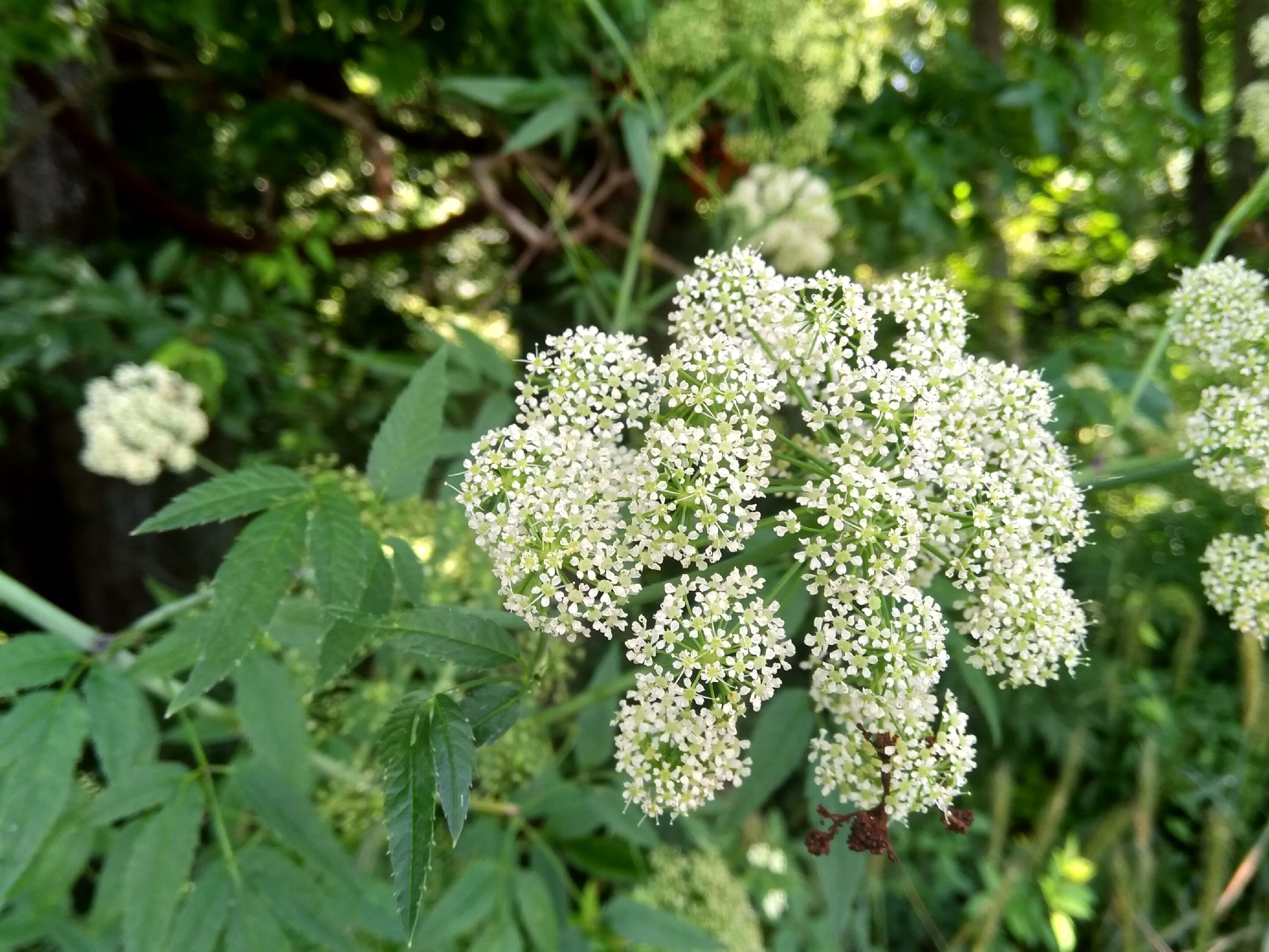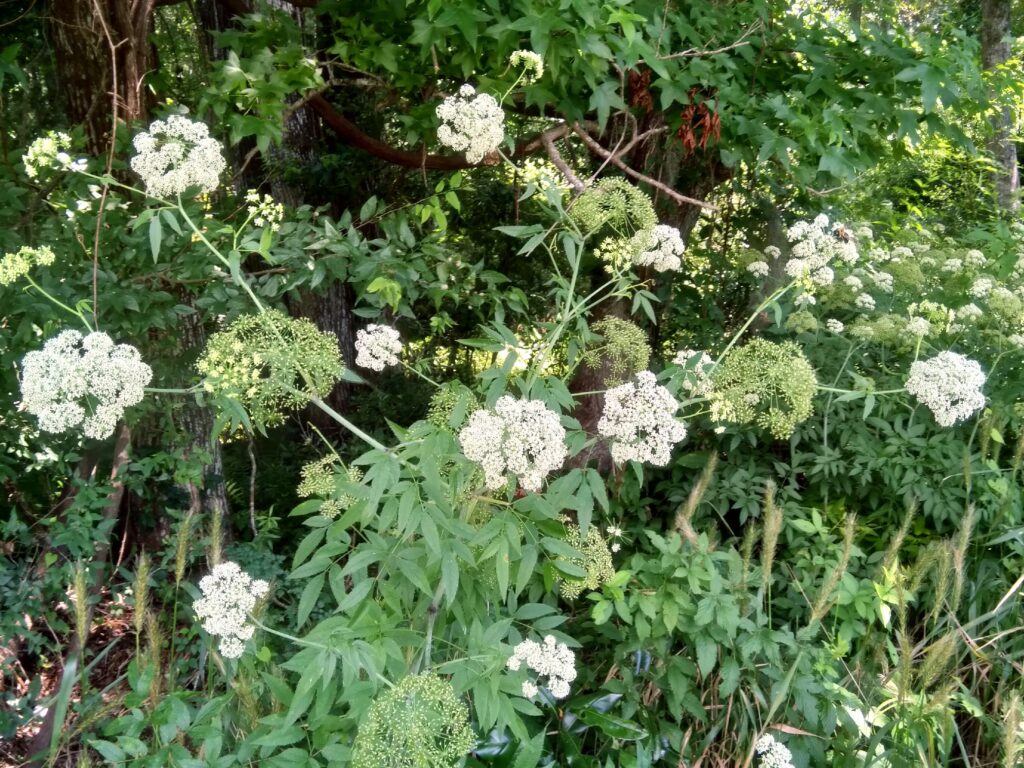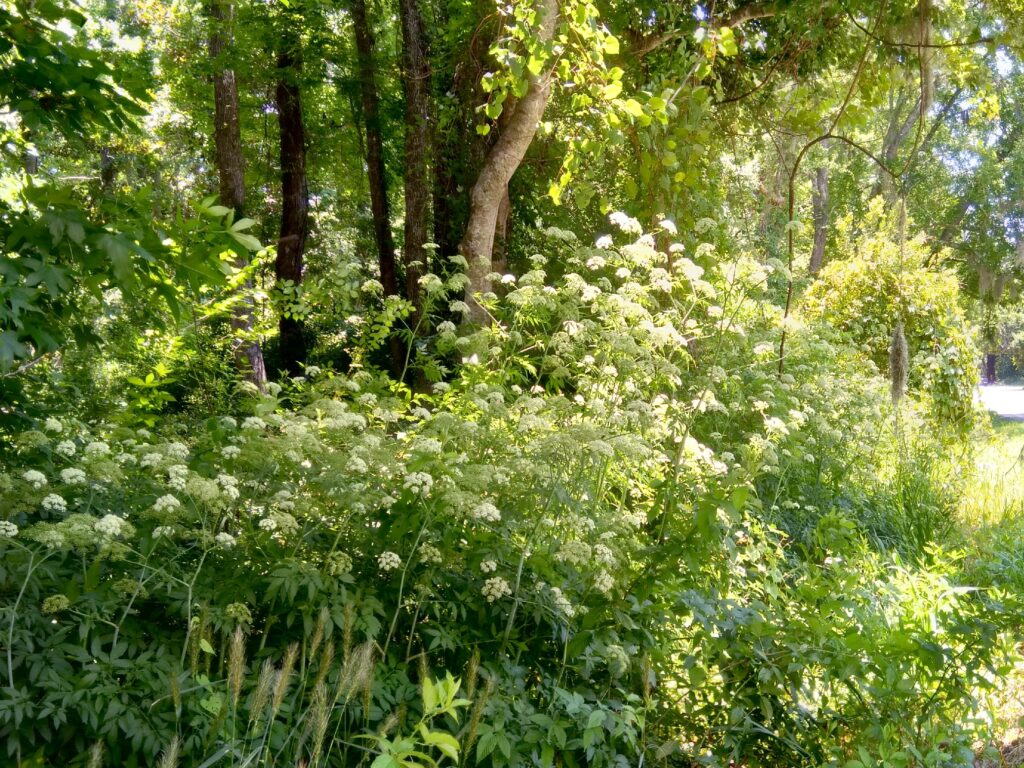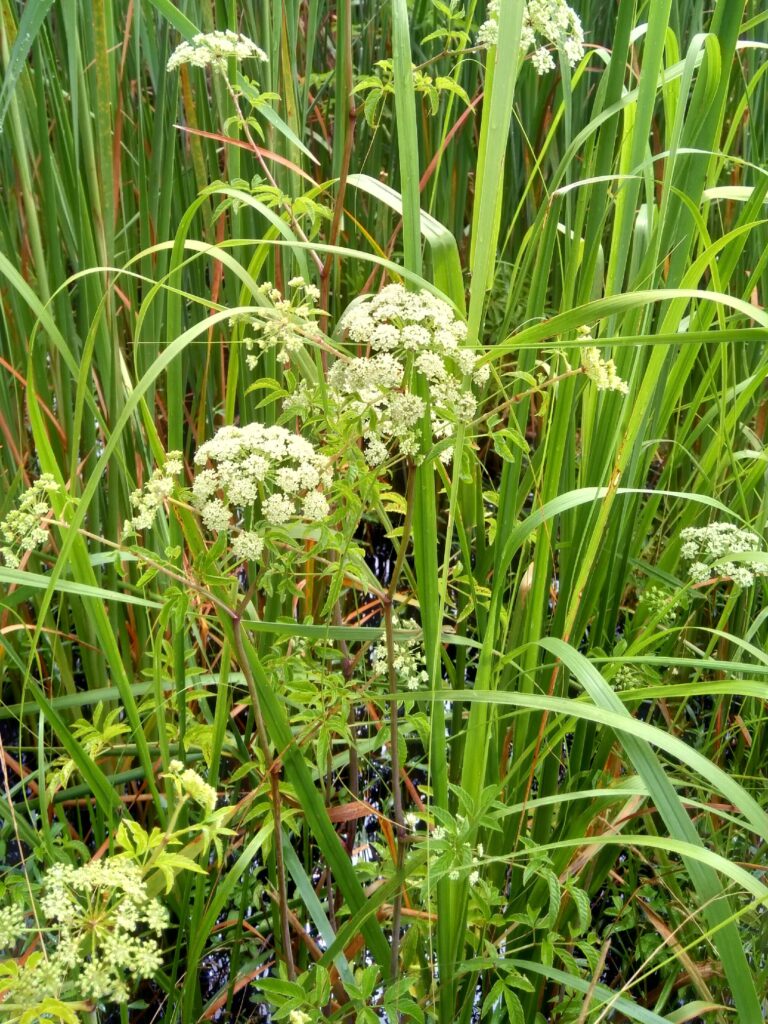



This week for Flora and Fauna Friday we have a powerfully poisonous wetland wildflower, Spotted Water Hemlock (Cicuta maculata).
Spotted Water Hemlock is a tall stringy wildflower native to the United States and found extensively throughout both the Lower Forty-Eight and the Lowcountry. It loves perpetually wet and somewhat sunny soils, usually right on the fringes of permanent wetlands. The plant can grow to a respectable eight feet in height and has large, highly divided, compound leaves. Its stem is hollow and streaked with vertical purple lines. It is rhizomatic and perennial, spreading slowly along the wetland edge and returning year after year. It blooms in early summer, producing many umbels composed of hundreds of small white flowers.
Spotted Water Hemlock’s most noteworthy characteristic is neither its size nor its flowers, it’s a chemical in its flesh called cicutoxin. This chemical is found in all parts of the plant but is most concentrated in its roots. It’s a neurotoxin and its potency has won Spotted Water Hemlock the title of most toxic plant in North America. Normally this poison wouldn’t be much of a problem for people as most folks don’t eat random plants they find growing in a ditch. However, this Hemlock is a member of the Carrot family, Apiaceae, and is similar in appearance to several edible wild plants. As a result, a case of mistaken identity with this wildflower is most often fatal. I won’t go into details but it’s an unpleasant way to go.